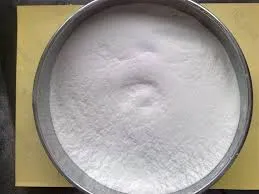
Sep . 24, 2024 07:31 Back to list
Applications and Benefits of Hydroxypropyl Methylcellulose in Various Industries
Understanding Hydroxypropyl Methylcellulose Uses and Applications Hydroxypropyl Methylcellulose (HPMC) is a versatile cellulose ether that has found a wide array of applications across various industries
. Derived from natural cellulose, HPMC offers unique properties that make it an essential ingredient in products ranging from pharmaceuticals to food and construction materials.
Pharmaceutical Applications
One of the most significant uses of HPMC is in the pharmaceutical industry. It serves as a pharmaceutical excipient, which means it aids in the formulation of medications. HPMC is widely used as a binder in tablet formulations, ensuring that the active ingredients are evenly distributed and remain intact during processing. Additionally, it acts as a controlled-release agent, allowing for the gradual release of the medication in the body. This property is particularly valuable for chronic conditions that require consistent medication levels over time.
Moreover, HPMC is utilized in the production of eye drops and other ophthalmic solutions due to its excellent film-forming and thickening properties. The high viscosity of HPMC helps to retain moisture and provides lubrication, enhancing comfort for patients suffering from dry eyes.
Food Industry Applications
In the food sector, HPMC plays a vital role as a food additive. Its ability to form gels and its emulsifying properties make it a popular choice for enhancing textures and stabilizing food products. For instance, HPMC is commonly found in gluten-free products as it mimics the structure and elasticity typically provided by gluten. This is essential for creating desirable textures in baked goods and other food items.
hydroxypropyl methylcellulose uses

HPMC also functions as a thickener and stabilizer in sauces, dressings, and soups, where it helps maintain consistent texture and prevent separation. Furthermore, it can be used as a fat replacer in low-fat food formulations, contributing to a healthy diet without compromising on taste or mouthfeel.
Construction Industry Applications
The construction industry has increasingly integrated HPMC into various applications due to its impressive binding and film-forming capabilities. It is commonly used in tile adhesives, wall joint compounds, and mortar formulations. When added to these materials, HPMC improves workability, extending the open time for applications and ensuring better adhesion to surfaces.
Additionally, HPMC enhances water retention in mortars, which is crucial for achieving optimal strength and durability. This property allows for extended drying times, which reduces the risk of cracks and improves overall structural integrity.
Conclusion
The versatility of Hydroxypropyl Methylcellulose extends across multiple sectors, making it a valuable compound in today's market. Whether enhancing the bioavailability of pharmaceuticals, improving the texture and stability of food products, or providing essential properties in construction materials, HPMC showcases its multifunctional capabilities. As industries continue to innovate and demand more efficient and effective materials, the role of HPMC is likely to expand, reinforcing its significance across diverse applications. With its broad range of uses, HPMC stands as a testament to the advancements in material science and the ongoing quest for improved product formulations.
-
What is HPMC?
NewsJun.06,2025
-
Understanding Redispersible Powder: The Future of Construction Materials
NewsJun.06,2025
-
Understanding RDP Powder: The Ultimate Solution for Your Construction Needs
NewsJun.06,2025
-
Pure HPMC: The Ideal Solution for Modern Construction and Building Materials
NewsJun.06,2025
-
Methyl Hydroxyethyl Cellulose: A Versatile Chemical Compound
NewsJun.06,2025
-
Hydroxyethyl Cellulose Power: The Essential Chemical for Various Industries
NewsJun.06,2025







